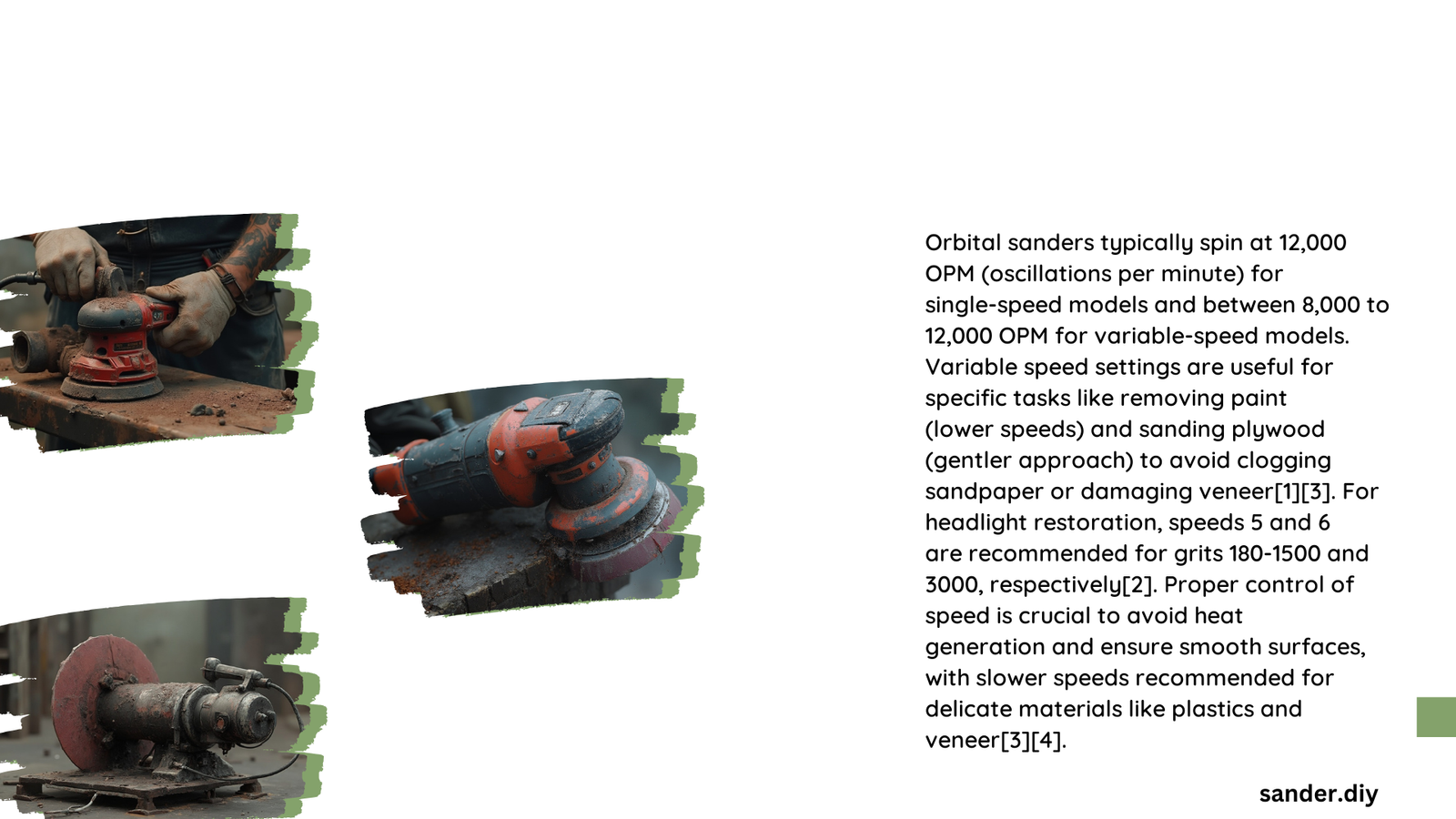Orbital sander speeds are critical for achieving professional-quality surface finishing across different materials. Understanding the precise RPM range can dramatically impact your project’s quality, efficiency, and final appearance. Whether you’re working with delicate wood surfaces or tackling tough metal restoration, selecting the right orbital sander speed is the key to optimal results.
What Are the Critical Factors in Orbital Sander Speeds?
How Do Material Types Influence Sander Speed?
Different materials require unique speed approaches to achieve the best results:
Wood Sanding Speed Ranges
- Rough Sanding: 7,000 – 10,000 RPM
- Fine Finishing: 4,000 – 7,000 RPM
- Delicate Surfaces: 2,000 – 4,000 RPM
| Material | Recommended Speed Range | Typical Grit |
|---|---|---|
| Hardwood | 6,000 – 8,000 RPM | 120-180 |
| Softwood | 4,000 – 6,000 RPM | 80-120 |
| Veneer | 2,000 – 4,000 RPM | 220-400 |
Why Speed Matters in Surface Preparation?
Speed impacts several critical aspects of sanding:
– Heat generation
– Material removal rate
– Surface smoothness
– Potential for surface damage
– Sanding disc wear
What Happens at Different Speed Levels?
- Low Speed (2,000 – 4,000 RPM)
- Minimal heat generation
- Precise control
- Ideal for delicate materials
-
Prevents surface melting
-
Medium Speed (4,000 – 7,000 RPM)
- Balanced material removal
- Suitable for most wood finishing
- Reduces swirl marks
-
Optimal for intermediate grits
-
High Speed (7,000 – 10,000 RPM)
- Aggressive material removal
- Best for tough surfaces
- Rapid stock removal
- Requires careful technique
How to Select the Perfect Speed?
Key considerations for choosing orbital sander speeds:
– Material hardness
– Desired surface finish
– Sandpaper grit
– Project requirements
– Tool manufacturer recommendations
Pro Tips for Optimal Sanding Performance
- Always start at lower speeds and gradually increase
- Use variable speed settings for maximum flexibility
- Match speed to sandpaper grit
- Wear appropriate safety gear
- Maintain consistent pressure
Technical Insights into Orbital Sander Mechanics

Modern orbital sanders typically offer:
– Variable speed controls
– Digital RPM displays
– Soft start mechanisms
– Electronic speed stabilization
Common Mistakes to Avoid
- Using maximum speed on delicate surfaces
- Applying inconsistent pressure
- Neglecting dust extraction
- Using worn-out sanding discs
- Ignoring manufacturer guidelines
Conclusion
Mastering orbital sander speeds requires practice, understanding, and attention to detail. By comprehending the nuanced relationship between speed, material, and desired outcome, woodworkers and professionals can achieve exceptional surface finishes.
Recommended Equipment
- Variable speed random orbital sander
- Multiple grit sandpaper sets
- Dust extraction system
- Digital RPM meter (optional)
Safety Recommendations
- Always wear eye protection
- Use dust masks
- Ensure proper ventilation
- Follow manufacturer’s safety guidelines
Maintenance Tips
- Clean sander after each use
- Check electrical connections
- Replace worn components
- Store in dry environment
Skill Development
- Practice on scrap materials
- Experiment with different speeds
- Keep detailed project logs
- Learn from experienced professionals
References:
– Professional Woodworking Magazine
– Tool Performance Research Institute
– Advanced Sanding Techniques Guide
